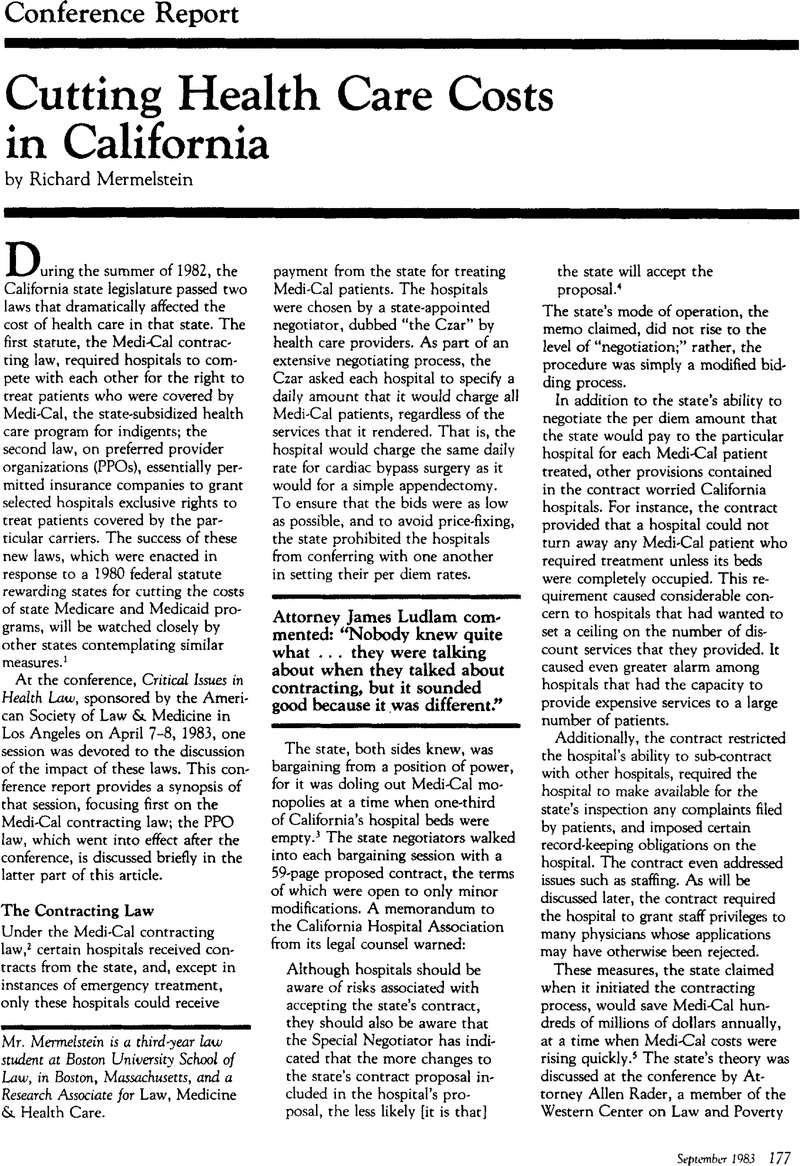Memorandum to the California Hospital Association from
Peeler, Musick &
Garrett, , in Los Angeles, October 17,
1982 (available in the reading materials from the conference,
Critical Issues in Health Law,
Los Angeles, California, April
7–
8, 1983).
Google Scholar